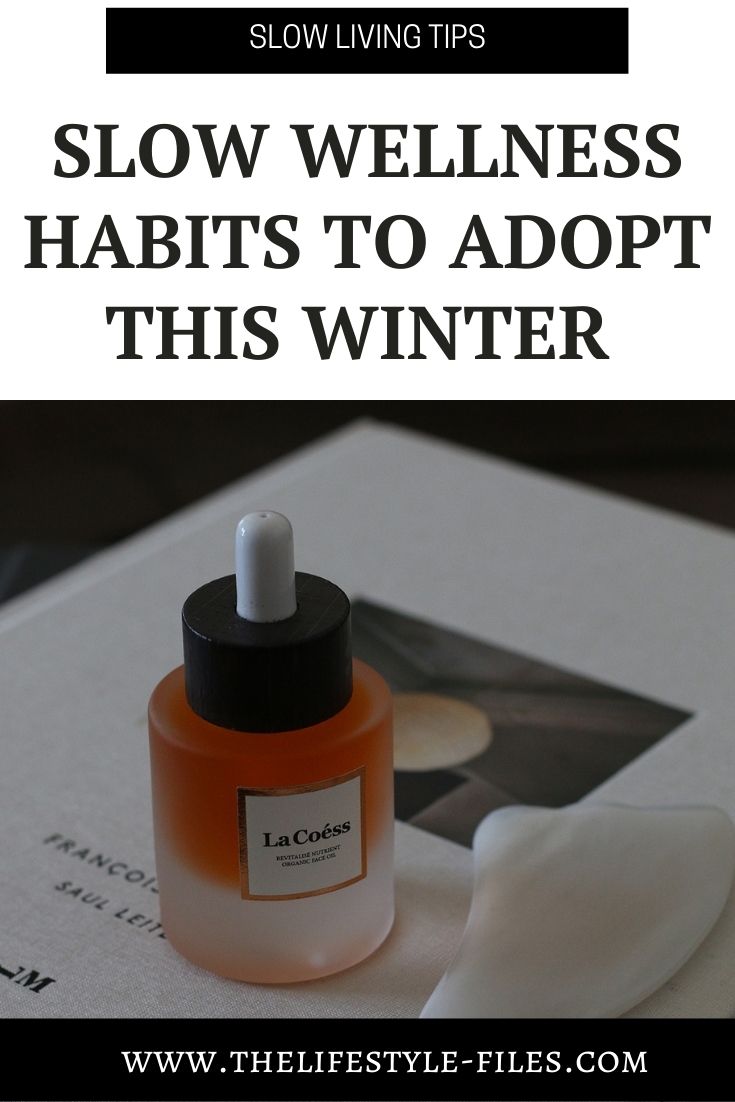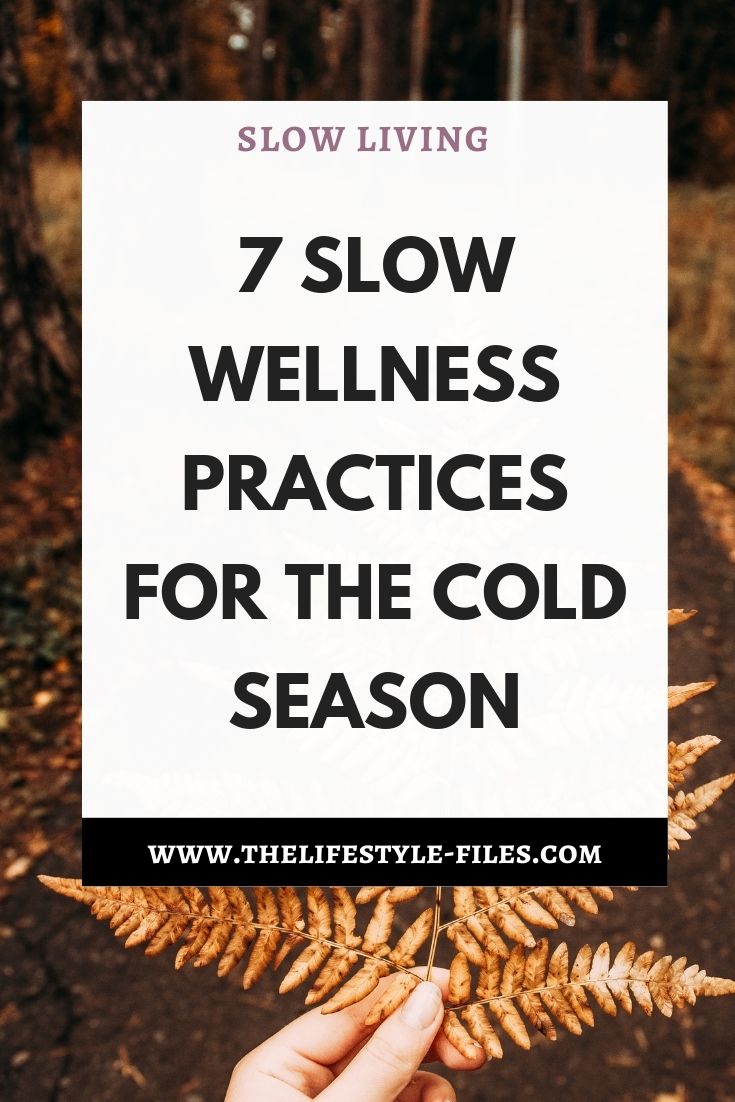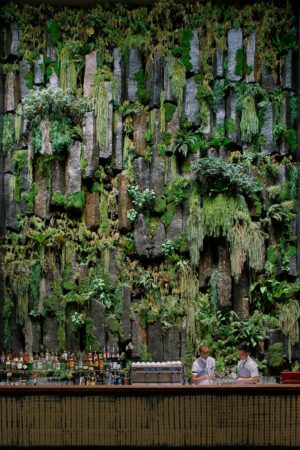
I’m a big proponent of seasonal lifestyle routines – they help us offset the impact of seasonal changes and imbalances and support our physical and mental health and wellbeing all year round.
This year, it may be even more important to be intentional about our wellness routines and prepare for the upcoming cold season. Our inner wellness reserves are already depleted due to the pandemic even though we’d need them more than ever with no clear end in sight to this COVID situation.
It’s perfectly normal to be stressed, tired, and frustrated – this year sucked, big time. But we need to gather a little more strength and take care of ourselves and protect others (masks and social distancing are still the most important seasonal trends we must follow). So, here are a couple of wellness tips that can hopefully make the upcoming season a bit more bearable and contribute to boosting your wellbeing.
But before we dive into the world of fall/winter wellness, lets quickly discuss two things:
- Self-care and wellness encompass a lot more things than just skincare routines or dietary changes. While these serve important purposes, paying attention to our mental health, from dealing with traumas to stepping away from toxic situations or people, is way more important. This list intentionally focuses on the first-category of wellness practices, but that doesn’t mean we should neglect this second.
- It’s also important to acknowledge that this list is a fairly privileged take on wellness and self-care. This is something many of us (including experts in the wellness sphere) often fail to realize or voice and that’s a problem. Most people in the world do not have access to these resources or are not in a place to even consider them. The reason why it’s important to acknowledge this is not because it makes us seem like considerate, “woke” people. But because this enables us to put things into perspective, step out of our privileged social and class bubbles, and ultimately become more attuned to the needs of other people as well.
This doesn’t mean we should feel guilty about enjoying a nice bubble bath or buying an expensive coffee maker for our morning latte made out of specialty coffee. As I said, these can and do serve a purpose and each one of us should find the things that give us joy in our everyday life. But we should also express gratitude for these opportunities (which is an act of wellness in itself) and use the mental power we gain to care for others as well.

Forest bathing
Forest bathing or shinrin-yoku is a Japanese concept – it literally means forest bath – and it’s the practice of spending mindful time in the forest. It may sound like a fancy term for just plain hiking but it’s a bit more than that. It’s about slowing down, paying attention to nature, taking it in with all our senses, tune in to the smells, sights, textures, details (find more forest bathing tips here). Forest bathing provides a different sensual experience in each season, so it’s worth trying it in the fall and winter months as well.
Barre at home
I became a barre convert during the spring lockdown when I discovered the London fitness studio Psycle (and mainly their leading barre instructor, Rod). I’ve been doing barre classes 2-3, sometimes 4 classes a week since March, which is probably the longest time I managed to stick to a workout routine in my adult life. In the last 7 months, there were only like 2 weeks that I missed the sessions and only one of them was due to my usual extreme laziness, this is how much I came to love this workout. It’s fun, energizing, and you can see progress in your flexibility and muscle tone in a very short amount of time. I think home workouts are still the norm for most of us, so I really recommend trying barre if you haven’t yet. Since then, Psycle has also launched a paid platform for home workouts, but Rod still has a bunch of free classes on his IG as well (and he’s doing 20-minutes live classes on Tuesdays).
Slow tea ritual
In the last few years, I came to regard drinking tea as a wellness practice. Good quality tea is full of beneficial nutrients, like antioxidants that are good for our health and if we consume it properly it can also serve as a moment of mindfulness and slowing down. Unfortunately, tea consumption has also fallen victim to our fast lifestyle. In a lot of cultures, drinking tea is (or at least used to be) a kind of ritual with its own ceremonial steps. However, nowadays for most people drinking tea is just about dropping a regular teabag into a cup and drinking it on the go, without actually stopping to take a break and properly enjoy it. But with some small changes, we can reintroduce the mindfulness part of tea drinking into our daily life and thus enjoy its full wellness benefits and the cold season is perfect for this. Here’s my post on how to start a slow tea ritual and a short guide on why you should always go for loose leaf tea instead of teabags. My current favorite teas are Japanese genmaicha (green tea with roasted brown rice), oolong, yellow tea, and green tea with dried cherries.
Facial massage with rich, plant-based face oils
I love face oils all year round, but the cold season is especially suited for practicing this skincare method. Facial massage whether it’s with a jade roller, a gua sha, or even with your bare hands improves circulation, depuffs and relaxes the skin, and helps absorb the valuable ingredients of the oils. Currently, these are my favorite oils that I use regularly:
- La Coess REVITALISÉ Nutrient Organic Face Oil – I was gifted this oil during the summer and it has become one of my favorite luxurious face oils since then. It’s a blend of 15 certified-organic plant-based oils and extracts (including some of my all-time favorite ingredients, like sea buckthorn berry, rosehip seed, and grape seed oils). It smells amazing and makes my skin really plump and smooth, especially when I use it with a roller or gua sha.
- Pai Rosehip Bioregenerate Oil – this is a cult favorite for good reasons. It’s a highly concentrated rosehip oil and extract product, which glides on easily and provides the most beautiful glow after it’s absorbed.
- Leahlani Siren Brightening Serum – this is also a blend of different (mostly organic) plant oils, like sea buckthorn, sweet orange, ylang-ylang, tangerine, carrot, and others. It’s rich in antioxidants and brightens the skin, but the biggest benefit for me is its amazing, sweet smell – like tangerines or very sweet oranges. The smell is so intense, it functions like aromatherapy, I use it in the mornings because it’s so refreshing and energizing.
Herbal baths
Taking a long, hot bath is one of the easiest ways to relax and support your wellbeing during the cold months. You can also take this experience to a new level by adding various bath salts, oils, or even herbs or tea leaves to the water. The first time I tried bath tea bags was last year when I bought some in a Japanese beauty shop in Tokyo, and they were so fun to use. I’m not much of a beauty DIY person, but these are actually quite easy to make at home. Just add a bunch of tealeaves or aromatic herbs to a muslin bag and add it to the water or make tea beforehand and add that herb blended water to the tub (more directions + other bath salt recipes here). I’m not sure how much therapeutic benefits they have but they do provide a truly relaxing and luxurious bath experience.
Morning wellness shot
Get some part of your daily dose of greens and vitamins in liquid form – my favorites are green juices (some combination of celery, cucumber, green apple, lemon, pineapple, mint, parsley) and juice shots, like this ginger-turmeric one.
Seasonal, warming foods
Small seasonal changes in our diet have many health and wellness benefits. It’s perfectly normal to crave richer, heavier food during the cold season, but it’s still important to try to find a balance between comfort dishes and healthy, nutritious food (especially as the two are not mutually exclusive). Thankfully, nature is quite smart and seasonal food usually ticks both boxes, not to mention it’s also the most sustainable and environment-friendly option. Go for a plant-based diet full of root vegetables (squash, sweet potatoes, beets, carrots, celeries), warming spices (ginger, turmeric, garlic, cardamom, black pepper, cinnamon), cooked grains (oatmeal, brown rice), legumes and vegetables (lentils, chickpea, spinach, kale) – with, of course, the occassional delicious pies and crumbles.
What are your favorite fall/winter wellness habits?







